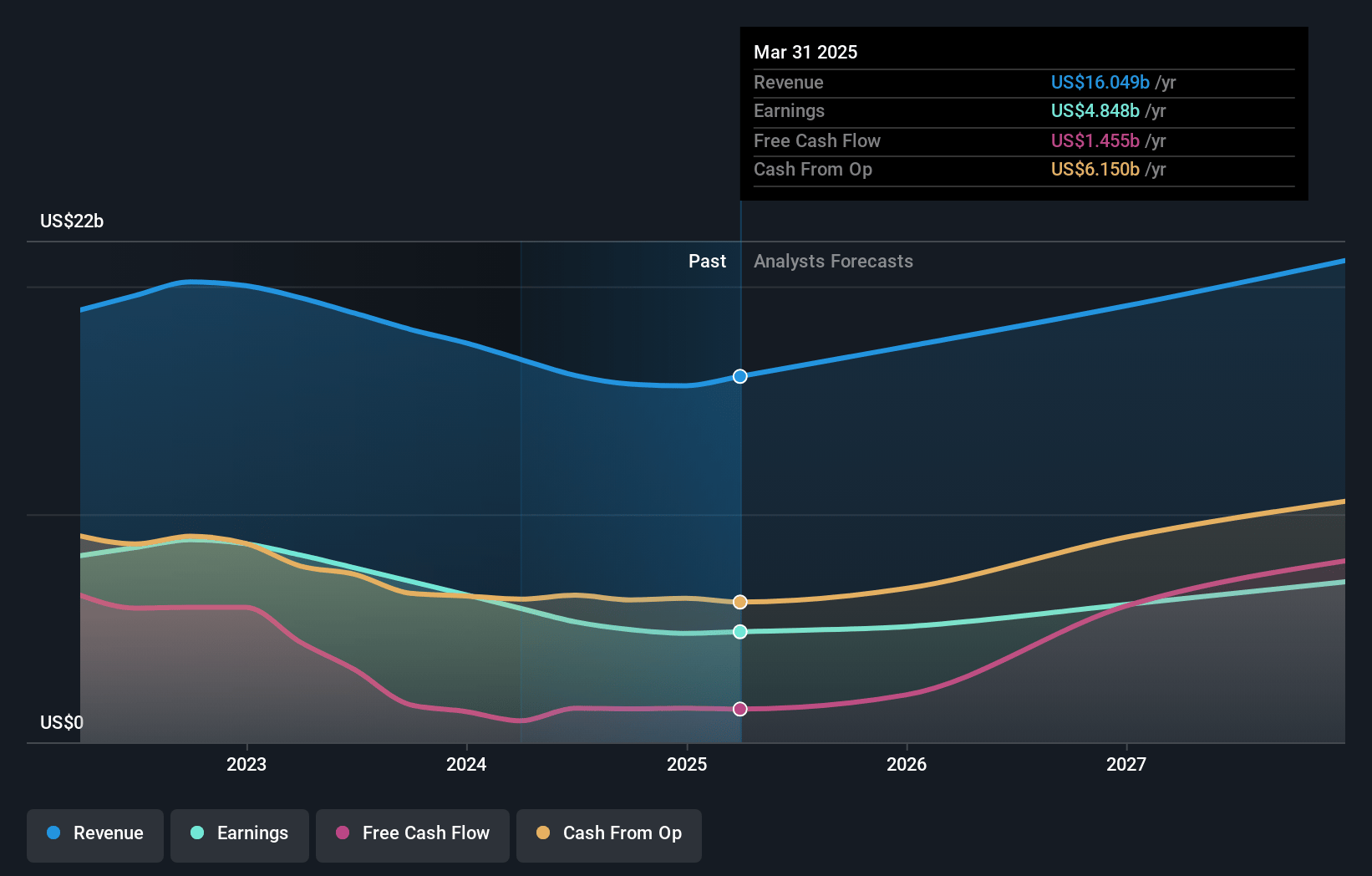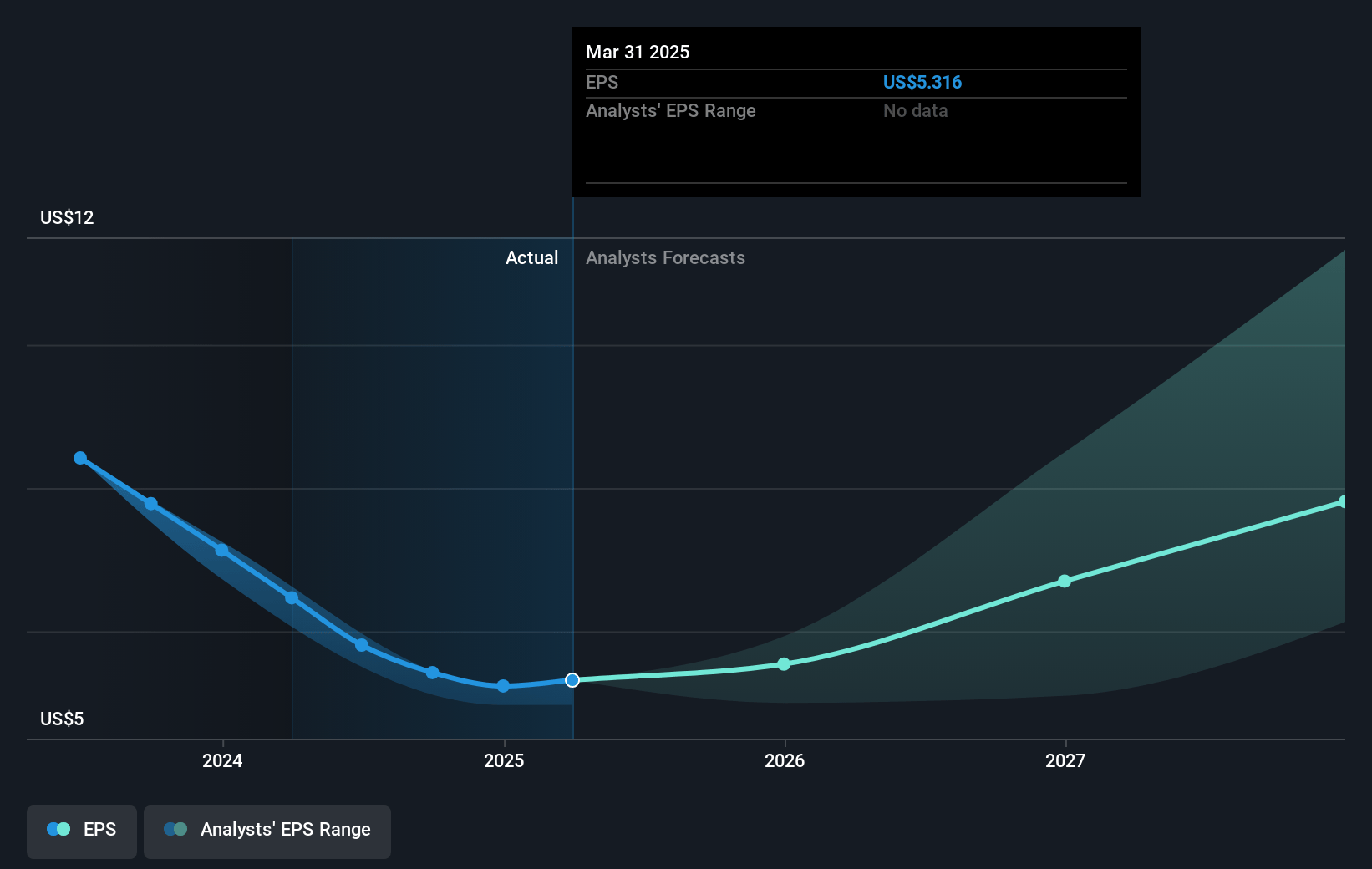Key Takeaways
- Replenishment cycles in low inventory markets and investments in technology aim to drive earnings and sustain long-term growth.
- Strategic capital management, including stock buybacks and dividends, is expected to enhance earnings per share growth.
- Geopolitical tensions, low customer inventories, competitive pressures, and operating expenses threaten Texas Instruments' revenue stability and margins amid potential interest rate risks.
Catalysts
About Texas Instruments- Designs, manufactures, and sells semiconductors to electronics designers and manufacturers in the United States, China, rest of Asia, Europe, Middle East, Africa, Japan, and internationally.
- The company anticipates a recovery across key end markets, particularly industrial and automotive, which are crucial to Texas Instruments' revenue growth moving forward.
- Geopolitically dependable capacity is emphasized as a future catalyst, providing flexibility in response to potential changes in tariffs, likely supporting TI's revenue stability and growth.
- With customer inventories at low levels across all end markets, a replenishment cycle is expected, potentially driving revenue and earnings growth as customers increase their inventory levels.
- Continuous investments in competitive advantages, including manufacturing technology and a broad product portfolio, are expected to sustain long-term growth in free cash flow per share, impacting TI’s net margins and overall profitability.
- A focus on capital management strategies, such as buying back stock and paying dividends from strong cash generation, is expected to enhance earnings per share growth.
Texas Instruments Future Earnings and Revenue Growth
Assumptions
How have these above catalysts been quantified?- Analysts are assuming Texas Instruments's revenue will grow by 11.0% annually over the next 3 years.
- Analysts assume that profit margins will increase from 30.2% today to 34.6% in 3 years time.
- Analysts expect earnings to reach $7.6 billion (and earnings per share of $8.67) by about April 2028, up from $4.8 billion today. However, there is some disagreement amongst the analysts with the more bearish ones expecting earnings as low as $5.8 billion.
- In order for the above numbers to justify the analysts price target, the company would need to trade at a PE ratio of 27.8x on those 2028 earnings, down from 30.1x today. This future PE is greater than the current PE for the US Semiconductor industry at 22.9x.
- Analysts expect the number of shares outstanding to decline by 0.22% per year for the next 3 years.
- To value all of this in today's terms, we will use a discount rate of 9.12%, as per the Simply Wall St company report.
Texas Instruments Future Earnings Per Share Growth
Risks
What could happen that would invalidate this narrative?- The uncertainty surrounding global tariffs and geopolitical tensions could disrupt supply chains, potentially leading to unpredictable economic conditions and impacting TI's future revenues.
- Customer inventory levels are reportedly at low levels, which could lead to abrupt shifts in demand that might affect short-term revenue predictions and create variability in earnings.
- The intense competition in key markets, particularly in China, where local companies are rapidly advancing, might pressure TI's pricing power and margins, impacting net margins negatively.
- High operating expenses, which increased by 6% from the previous year, could constrain net margins if revenue growth does not meet expectations.
- The substantial amount of debt, currently at $12.95 billion, could pose a risk to net income if interest rates increase or if cash flow generation is not sufficient to service debt payments efficiently.
Valuation
How have all the factors above been brought together to estimate a fair value?- The analysts have a consensus price target of $180.395 for Texas Instruments based on their expectations of its future earnings growth, profit margins and other risk factors. However, there is a degree of disagreement amongst analysts, with the most bullish reporting a price target of $248.0, and the most bearish reporting a price target of just $125.0.
- In order for you to agree with the analyst's consensus, you'd need to believe that by 2028, revenues will be $22.0 billion, earnings will come to $7.6 billion, and it would be trading on a PE ratio of 27.8x, assuming you use a discount rate of 9.1%.
- Given the current share price of $160.77, the analyst price target of $180.39 is 10.9% higher.
- We always encourage you to reach your own conclusions though. So sense check these analyst numbers against your own assumptions and expectations based on your understanding of the business and what you believe is probable.
How well do narratives help inform your perspective?
Disclaimer
Warren A.I. is a tool utilizing a Large Language Model (LLM) that ingests data on consensus price targets, forecasted revenue and earnings figures, as well as the transcripts of earnings calls to produce qualitative analysis. The narratives produced by Warren A.I. are general in nature and are based solely on analyst data and publicly-available material published by the respective companies. These scenarios are not indicative of the company's future performance and are exploratory in nature. Simply Wall St has no position in the company(s) mentioned. Simply Wall St may provide the securities issuer or related entities with website advertising services for a fee, on an arm's length basis. These relationships have no impact on the way we conduct our business, the content we host, or how our content is served to users. The price targets and estimates used are consensus data, and do not constitute a recommendation to buy or sell any stock, and they do not take account of your objectives, or your financial situation. Note that Warren A.I.'s analysis may not factor in the latest price-sensitive company announcements or qualitative material.







